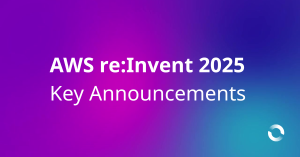Migrating Application and Infrastructure to AWS provides many benefits to the customers over maintaining on-premises resources, including cost efficiency, enhanced security controls, increased operational resilience, enhanced accessibility and many more. Migrating to AWS involves relocating on-premises infrastructure and data into AWS. The migration to AWS gives benefits to your business with ease of manageability, better security, and cost optimisation. AWS offers a variety of benefits and choices to migrate on-premises infrastructure and applications into the cloud.

Figure 1- AWS native services use to migrate Workloads and Database
AWS offers a wide range of native tools to migrate application workloads into AWS. Methods such as AWS Application Migration Service, VM (Virtual Machines) Import/Export, and AWS Database Migration Service. These methods can be used after conducting a proper assessment of on-premises applications and infrastructure to determine the path that suits the migration outcomes. In this blog, the focus is to migrate workloads into EC2 and RDS (Remote Desktop Services) (Relational Database Services).
What type of assessment is needed?
Assessment is a crucial step in the migration to identify the current state of the on-premises environment and propose the best migration strategy to the customer. There are several key factors to consider when migrating workloads into EC2 and RDS Services. This phase should evaluate using these key factors:
- Application and dependencies
- Infrastructure
- Performance
- Data and network
- Disaster recovery and business continuity
1. Benefits of migrating workloads into AWS EC2/ RDS
Most on-premises environments have used VMware for their virtualisation platform. Businesses are facing many challenges by maintaining infrastructure in on-premises data centres due to the high operational cost, scalability issues, disaster recovery issues, network latency, security issues and technology updates on the infrastructure. Moving from on-premises to AWS Cloud, businesses will achieve many benefits. The following benefits will be discussed by migrating workloads into EC2 and RDS:
Support Multiple Operating Systems
EC2 provides the capability to deploy multiple operating system platforms, with the computer resource included in the licence cost. Customers do not need to buy separate OS licences compared to VMware.Scalability
Moving the VM to EC2 allows you to scale up or down easily based on demand. Scalability can be scheduled or defined by the user by having maximum or minimum servers to serve based on demand. VMs require additional hardware setup when considering scaling.Right Sizing the Server
Organisations will receive significant cost savings and the best performance by rightsizing the instances. The decision of rightsizing will be based on resource utilisation and availability of the application. The following guidelines can be considered for rightsizing the instances in the cloud:- Performance metrics (CPU, memory usage, storage, and network requirements based on the applications)
- Pattern of utilisation (workloads either Dev, UAT or Production. The instance type can be considered based on demand and availability)
EC2 Saving Plans
AWS provides flexible pricing models for customers for the workloads based on usage. Amazon EC2 instance usage is applicable regardless of instance family, size, OS, tenancy, or AWS Region. AWS Cost Explorer provides recommendations for saving plans based on analysing usage. Saving plans provide savings of up to 72% off On-Demand, in exchange for a commitment.Multiple Regions and Availability Zones
Infrastructure can be hosted based on geographical location, with data centres in multiple regions spread around the globe.High Availability and Disaster Recovery
AWS provides many disaster recovery and high availability features such as multi-region replication, automatic backups, multiple availability zones for scalability, and failover mechanisms. As an example, in the event of failure, AWS services can be redeployed in different regions by using infrastructure as code services such as AWS CloudFormation and AWS Cloud Development Kit (AWS CDK). Data recovery can be done by using EC2/RDS snapshots and AWS Backup, meeting the RPO compared to on-premises VMware virtualisation environments.Access Control Methods
Access to EC2s and RDS can be restricted from IAM roles and policies by using AWS Identity Access Management (IAM).
2. Cost and sustainability of Moving to AWS Native
AWS provides a pay-as-you-go model, where the customer pays based on resource usage.
If a customer is used to paying for a VMware enterprise agreement, then equivalent savings plans, even reserved instances, will be equally important and familiar. Organisations can optimise their spending by utilising AWS’s different pricing options, including reserved instances and spot instances, to align costs with their usage patterns. AWS’s auto-scaling methods ensure that resources are provisioned only as needed, further enhancing cost efficiency.
A big reason why people buy or keep VMware is for cost management, including licence management. These need to be translated to AWS appropriately, considering controls to properly manage those licences in AWS operational readiness, by considering migration to alternative services to avoid the licence altogether (e.g. Oracle, IBM, RedHat, Microsoft, etc.).
3. Security and Resilience
AWS provides industry-standard security measures, global scalability, data encryption, network security, and advanced threat detection services compared to the security and advanced networking capabilities with VMware NSX. The following AWS services are used to implement security for EC2 instances:
- AWS Identity and Access Management (IAM) – access and permission for EC2 and RDS
- AWS Key Management Service (encrypt data across the workloads)
- AWS Security Groups
- AWS Secrets for store-to-store credentials
4. Monitoring and Management
Once migrated, ongoing monitoring and management are crucial for maintaining system health and performance. Utilising AWS CloudWatch Logs, Metrics, and Alarms provides insights into application performance and sets up alarms for proactive issue resolution. The following tools will be discussed in this blog, focusing on migrating application workloads and databases with the choice of rehost:
- Application Migration Services (migrate application workload)
- VM Export/Import (import virtual machine images from on-premises to AWS)
- AWS DMS (Database Migration Service) – migrate databases into AWS
AWS Application and Database Migration Methods
AWS introduces several migration methods and strategies based on the workloads and requirements. The following three methods are discussed in this blog, considering the rehosting of infrastructure resources from on-premises/VMware in the cloud to AWS.
Method 1: Application Migration Service (Lift and Shift)
(on premises/ VMWare Cloud VM to EC2)
Prerequisites
- An active AWS account in one of the AWS Regions that support Application Migration Service.
- Network connectivity between the source server and target EC2 server through a private network by using AWS Direct Connect or a virtual private network (VPN), or through the internet.
Limitations
- Only supports operating systems built for the x86 system architecture.
- Ref: MGN Service Limits: https://docs.aws.amazon.com/mgn/latest/ug/MGN-service-limits.html
Cost
- The Migration Services is free of charge for first 90 days (about 3 months).
- After 90 days (about 3 months) cost allocate hourly and monthly basis.
- Ref: Pricing: https://AWS.amazon.com/application-migration-service/pricing/
Support Operating Systems
- Support both Windows and Linux Operating Systems.
- Ref: https://docs.aws.amazon.com/mgn/latest/ug/Supported-Operating-Systems.html
Support Applications
- SAP, Oracle and Microsoft SQL Server.
Method 2: VM Import/Export (Migrate Your Existing Applications and Workloads to Amazon EC2)
This helps customers import virtual machine images with existing software, including products that are installed like anti-virus software, intrusion detection systems, and more. VM will convert the VM image into AWS EC2 AMI, which can be used with an EC2 instance.
Prerequisites
- An active AWS account required with the Network connectivity between the current state platform to AWS through AWS Direct Connect or a virtual private network (VPN), or through the internet
- VM Images are exported into S3 to then be imported. Necessary permission and access need to be in place.
Licensing
- AWS will provide Microsoft License after import VM into EC2. The instance is charging hourly basis for Windows server software and compute resource.
- For Red Hat Enterprise Linux (RHEL) instance license portability can be used by using Red Hat Cloud Access. More Information can be found on Red Hat.
Cost
- VM Import/Export is available at no additional charge. The standard usage charges for Amazon EC2, Amazon S3.
Support Operating Systems
- Windows, Red Hat Linux.
Support Platforms
- This can be importing Windows and Linux VMs that use VMware ESX or Workstation, Microsoft Hyper-V, and Citrix Xen virtualisation formats.
Method 3 (Database Servers): AWS Database Migration Service (DMS)
AWS Database Migration Service (DMS) is AWS Web Service, which is used to migrate Databases to AWS. This service can handle both homogeneous migrations (same database engine) and heterogeneous migrations (different database engines).
Prerequisites
- AWS DMS Supports are mainly used for migrating databases from on-premises datacenters or / VMWare cloud or VMWare in cloud.
- The on-premises to AWS connectivity needs to be established using site-to site VPN or direct connect or through the public network. The following cloud infrastructure needs to be in placed in AWS such as AWS account/ network set up (VPC’s, subnets) / IAM roles and permissions.
Limitations
There are a few limitations to consider in this service.
- DMS doesn’t support AWS customer managed keys.
- Several performance issues on large-scale migrations.
- DMS Serverless doesn’t support SSL connections for DB2 endpoints.
More limitations, Ref: https://docs.aws.amazon.com/dms/latest/userguide/CHAP_Serverless.Limitations.html
Cost
The following features will get free of charge
- AWS DMS Free Tier includes up to 750 hours of Single-AZ dms.t2. micro instance usage each month for one year.
- Database Transfers between AWS Database Migration Service and databases in Amazon RDS and Amazon EC2 instances in the same Availability Zone is free.
- AWS DMS Schema Conversion is free to use.
The following features will be chargeable
- Storage cost.
- On-demand instance pricing (On-demand instances let you pay for database migration capacity by the hour with no long-term commitments).
- AWS DMS Serverless capacity units (Only pay for the capacity you use on a per-hour basis. AWS DMS Serverless automatically provisions optimal capacity and scales up or down based on data transaction volume.)
Ref: https://aws.amazon.com/dms/pricing/
Supported Platforms
AWS DMS Serverless supports the following source Database engines
- Microsoft SQL Server
- PostgreSQL-compatible databases
- MySQL-compatible databases
- MariaDB
- Oracle
- IBM Db2
AWS DMS Serverless supports the following targets:
- Microsoft SQL Server
- PostgreSQL
- MySQL-compatible databases
- Oracle
- Amazon S3
- Amazon Redshift
- Amazon DynamoDB
- Amazon Kinesis Data Streams
- Amazon Managed Streaming for Apache Kafka
- Amazon OpenSearch Service
- Amazon Document DB (with MongoDB compatibility)
- Amazon Neptune
Conclusion
Migrating VMWare workloads into AWS Native services offers customers a powerful pathway to enhance flexibility, scalability and cost efficiency. By leveraging tools like AWS Application Migration Service. VM Import/Export and AWS Database migration services. These migration tools help businesses to do their transition into AWS native services with the minimum disruption and downtime.
The migration enhances IT operations in the organisation by modernising the infrastructure with broader collection of AWS services, improve permeances and providing better monitoring of the resource utilisation.
As organisations navigate this transformative journey, adopting AWS’s robust ecosystem will empower them to optimise operations, accelerate growth and position themselves strategically for future challenges in a cloud-driven landscape.




